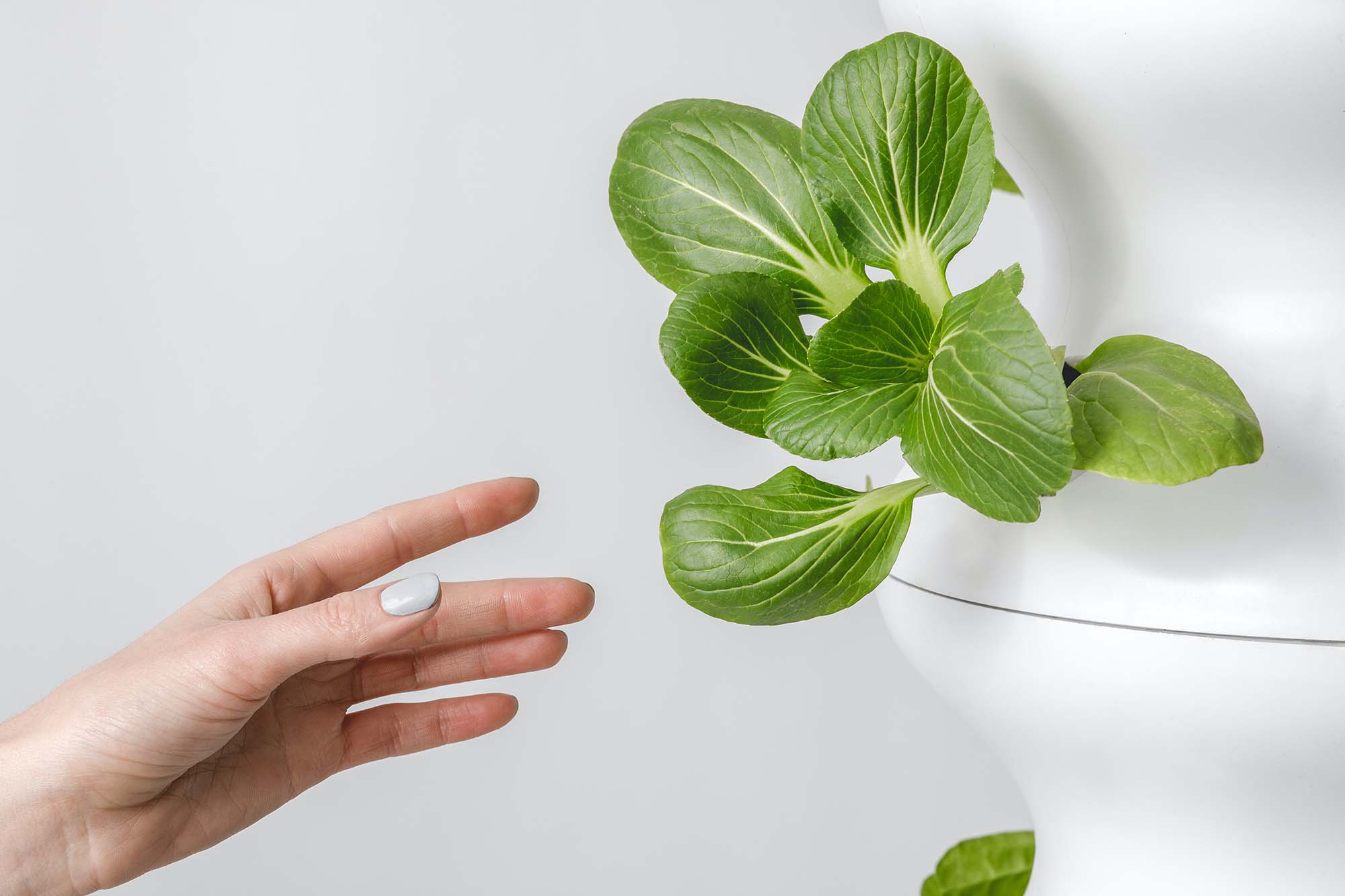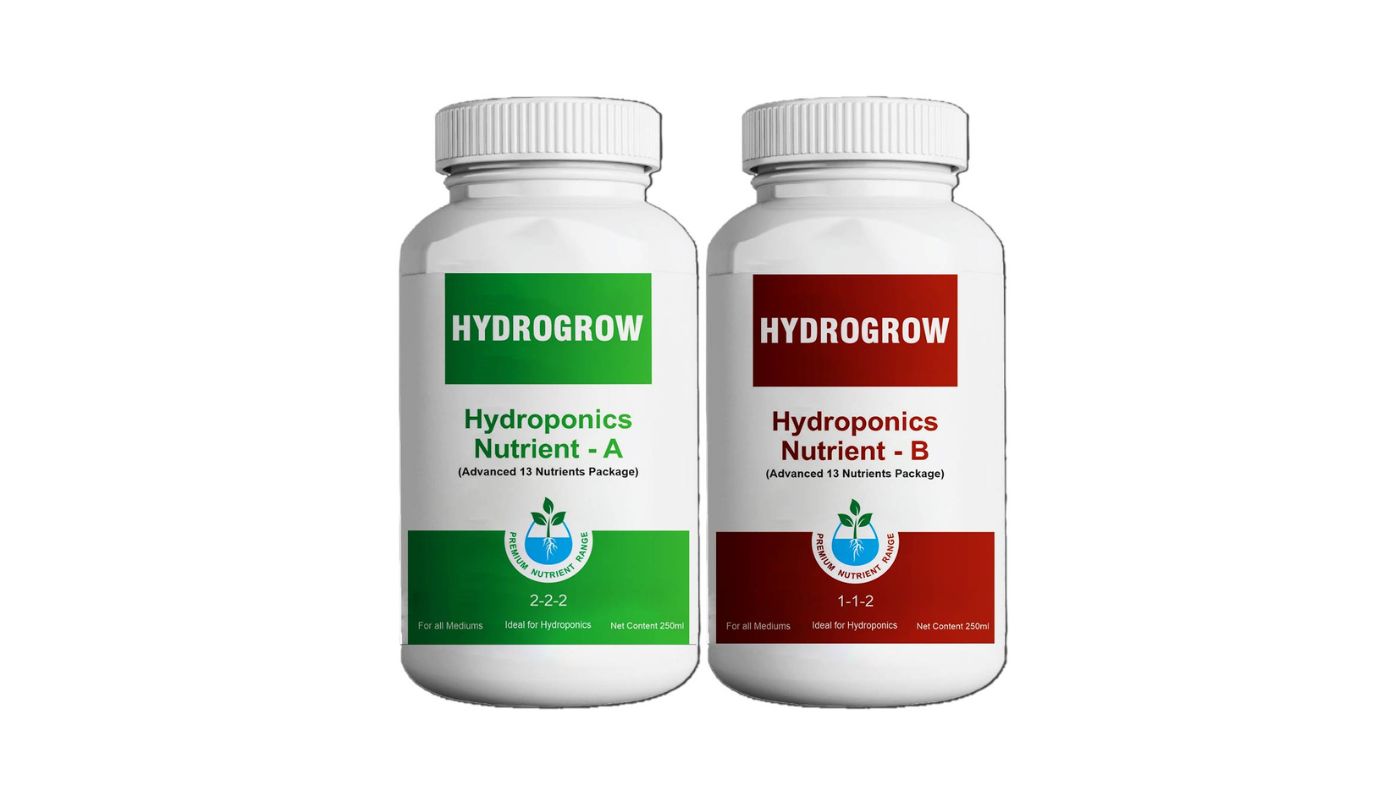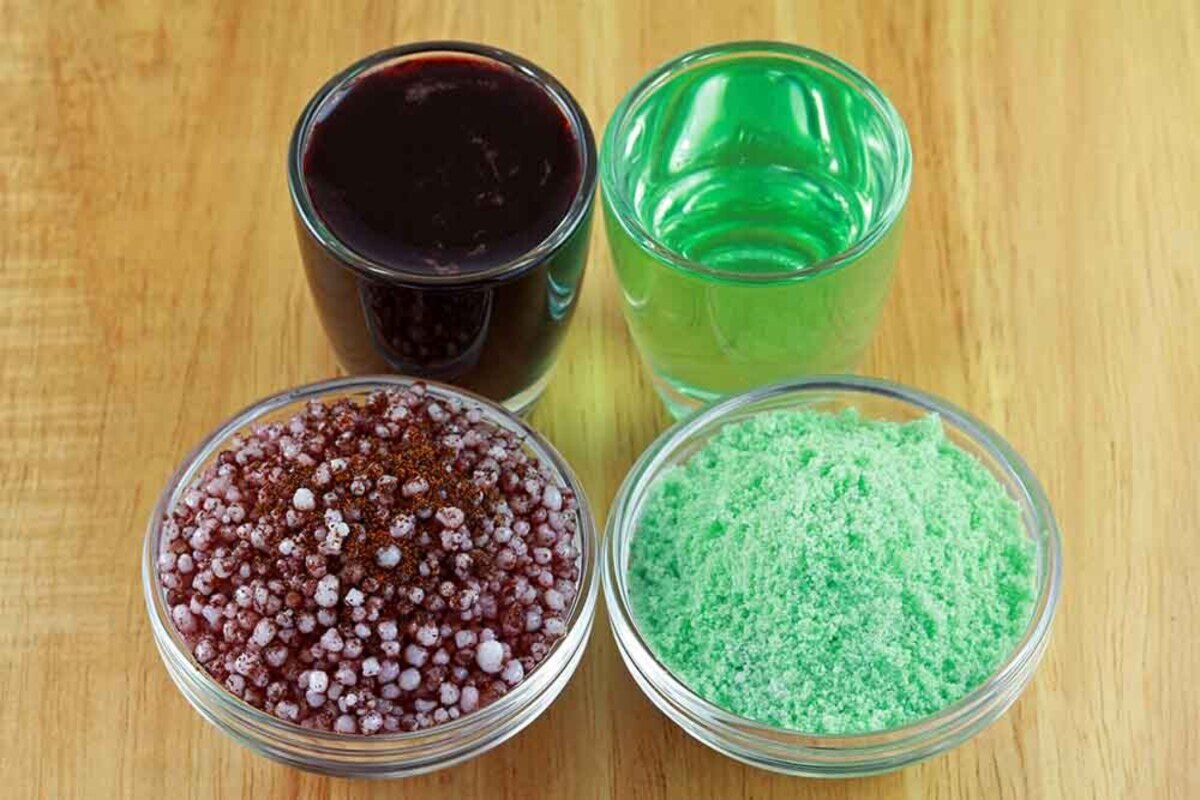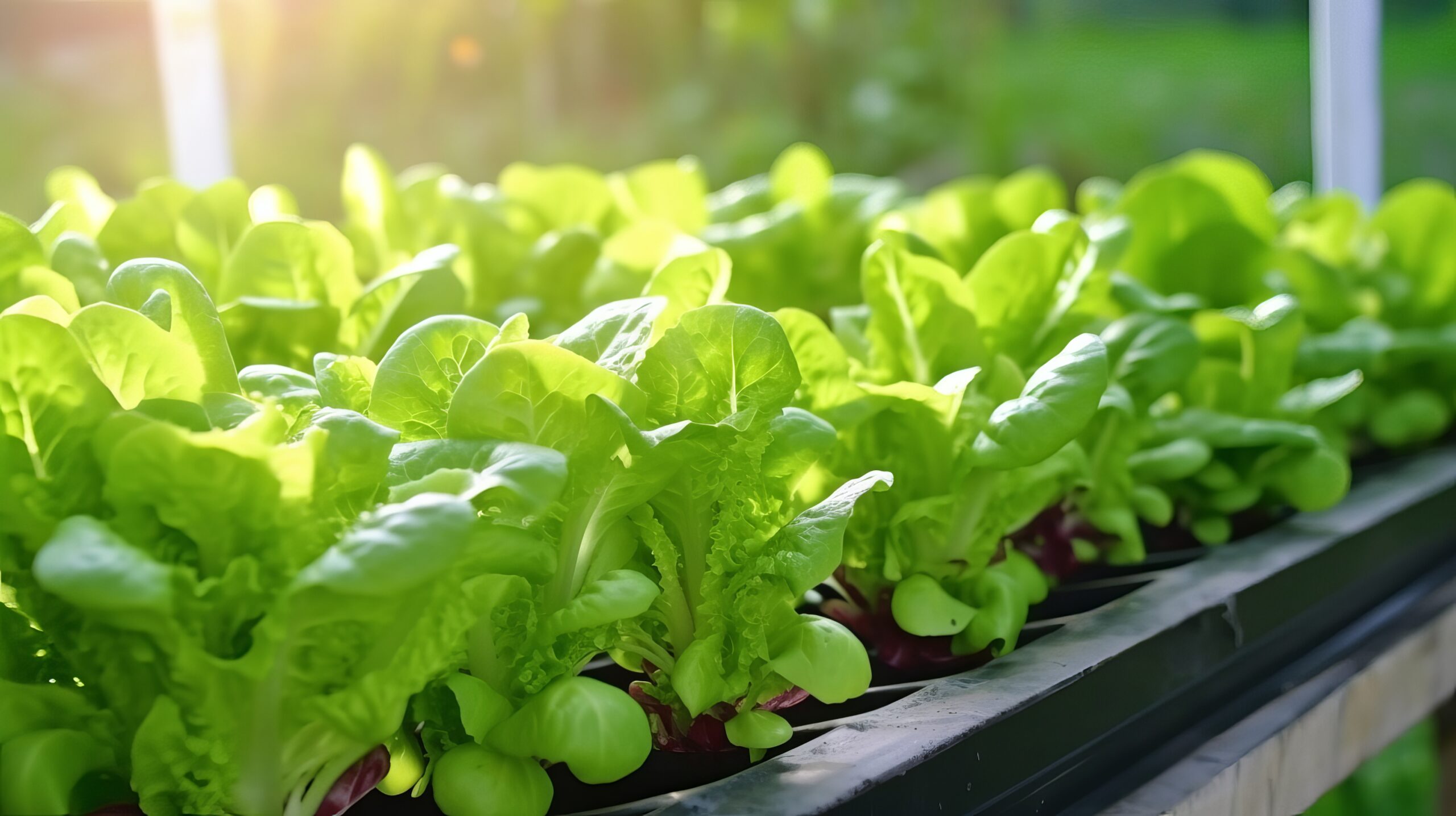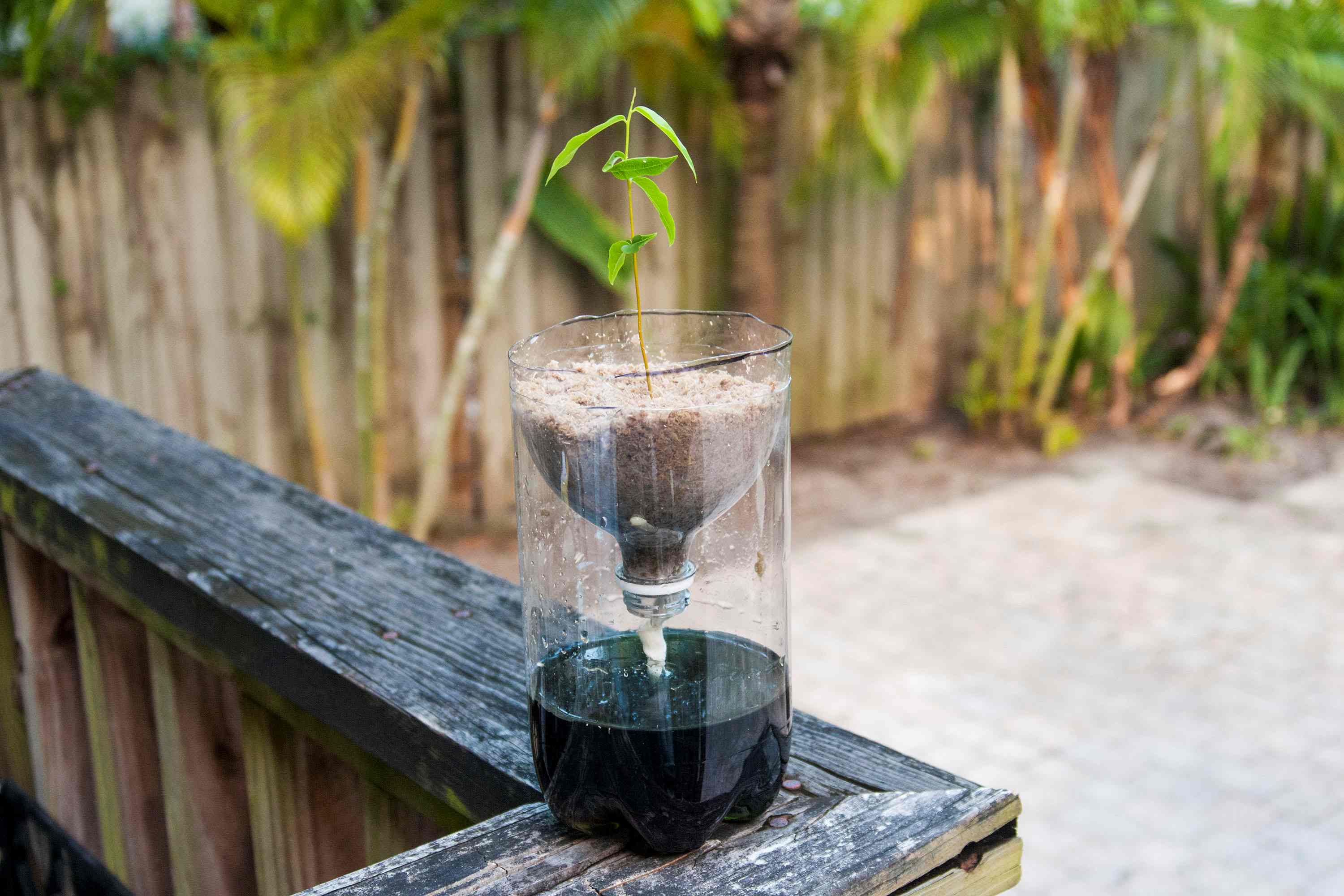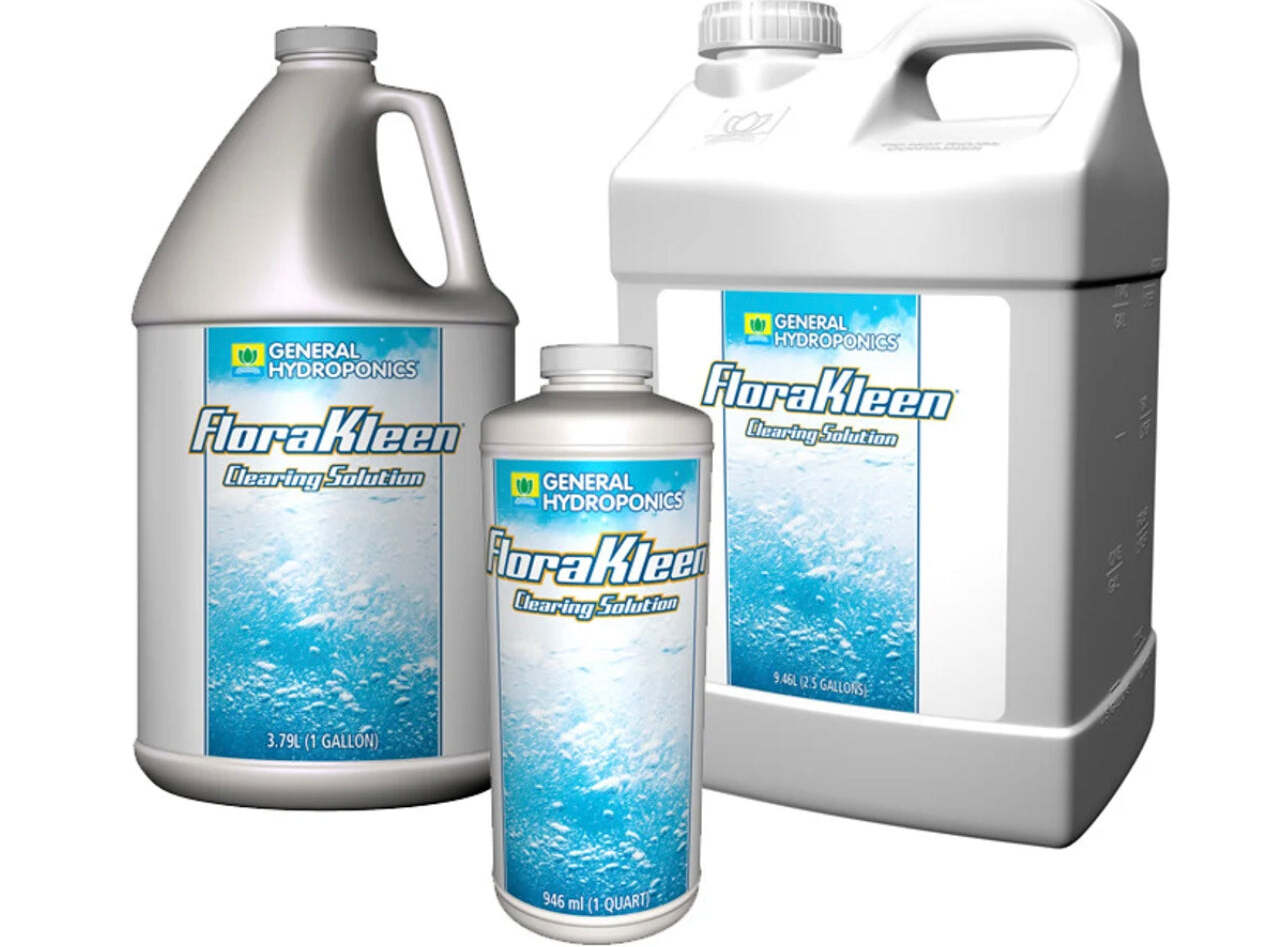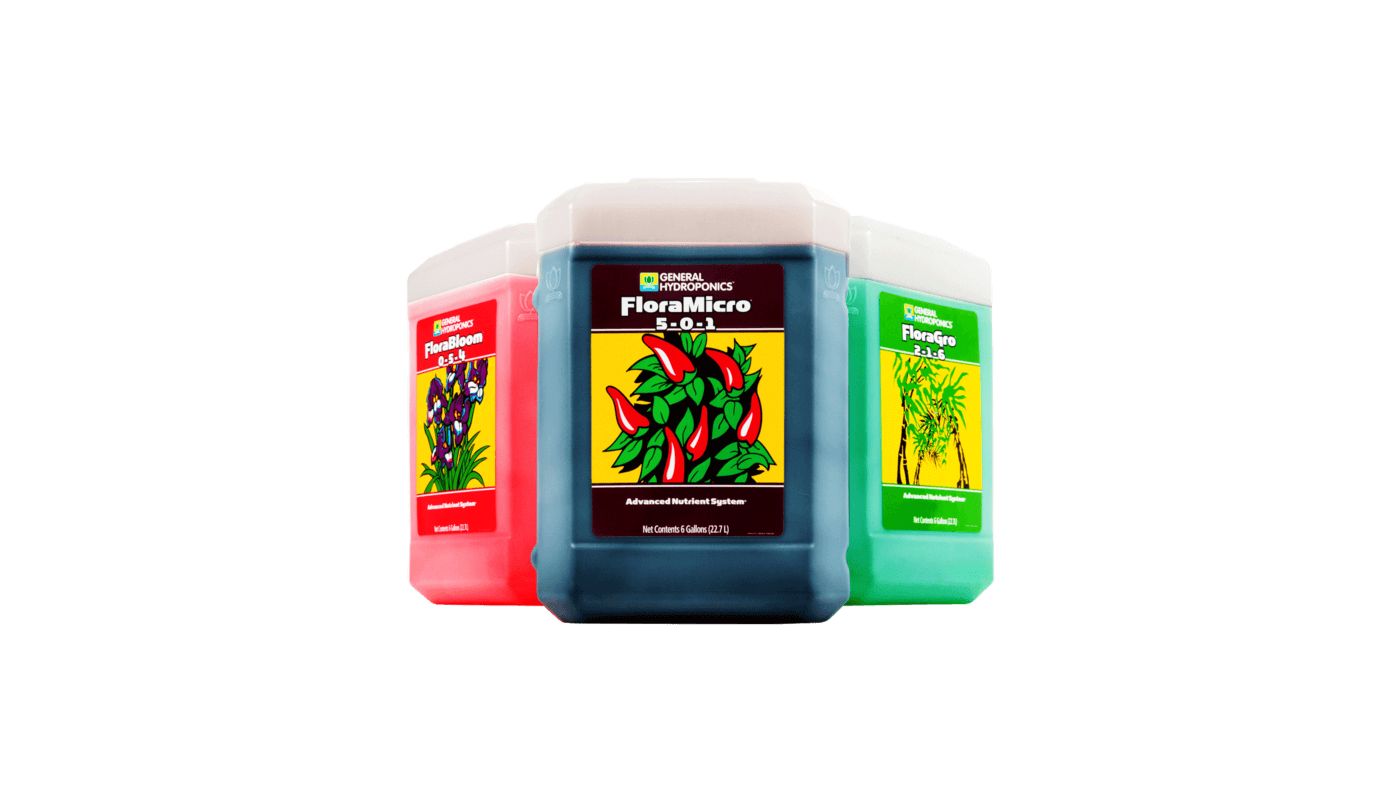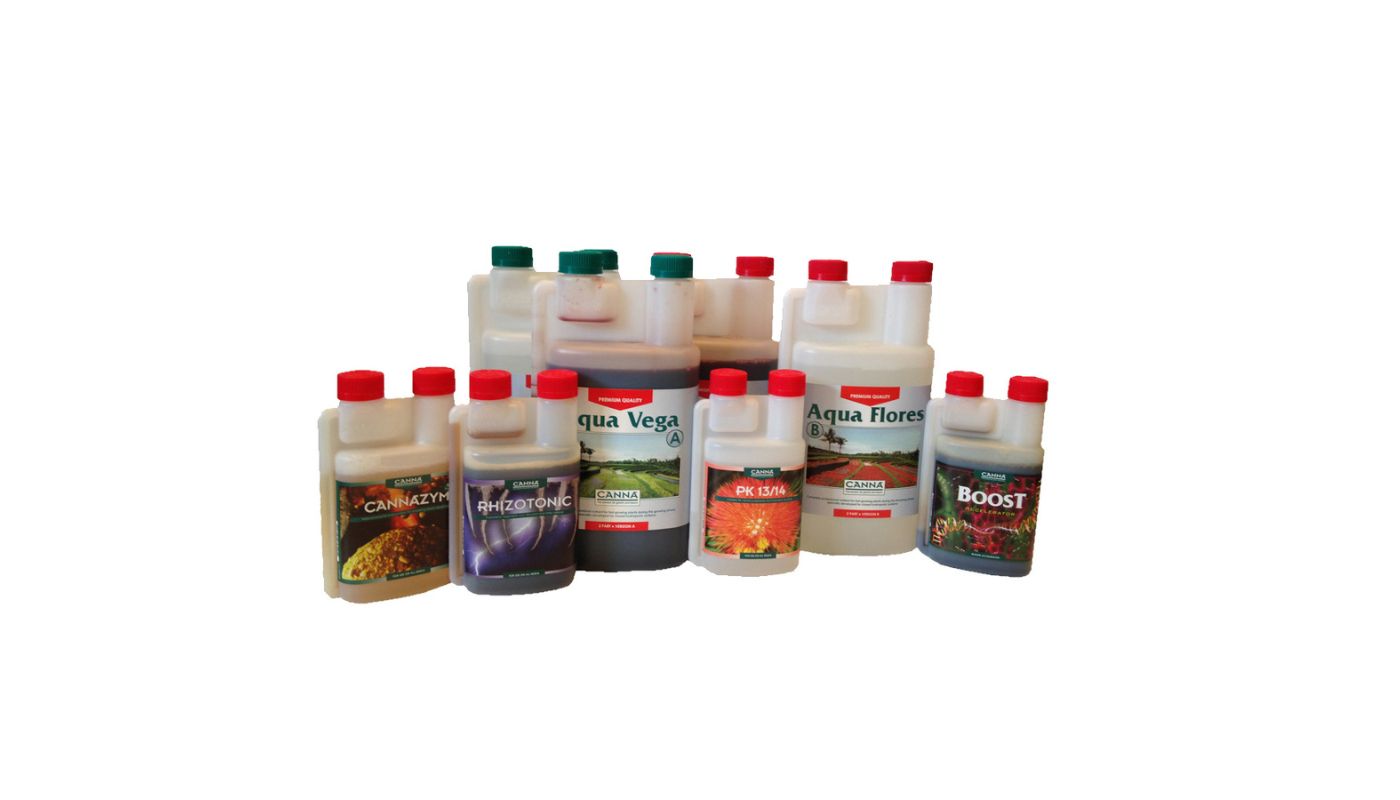Home>Gardening Tips and Tricks>Eco-Friendly Gardening>How To Make Nutrient Solution For Hydroponics
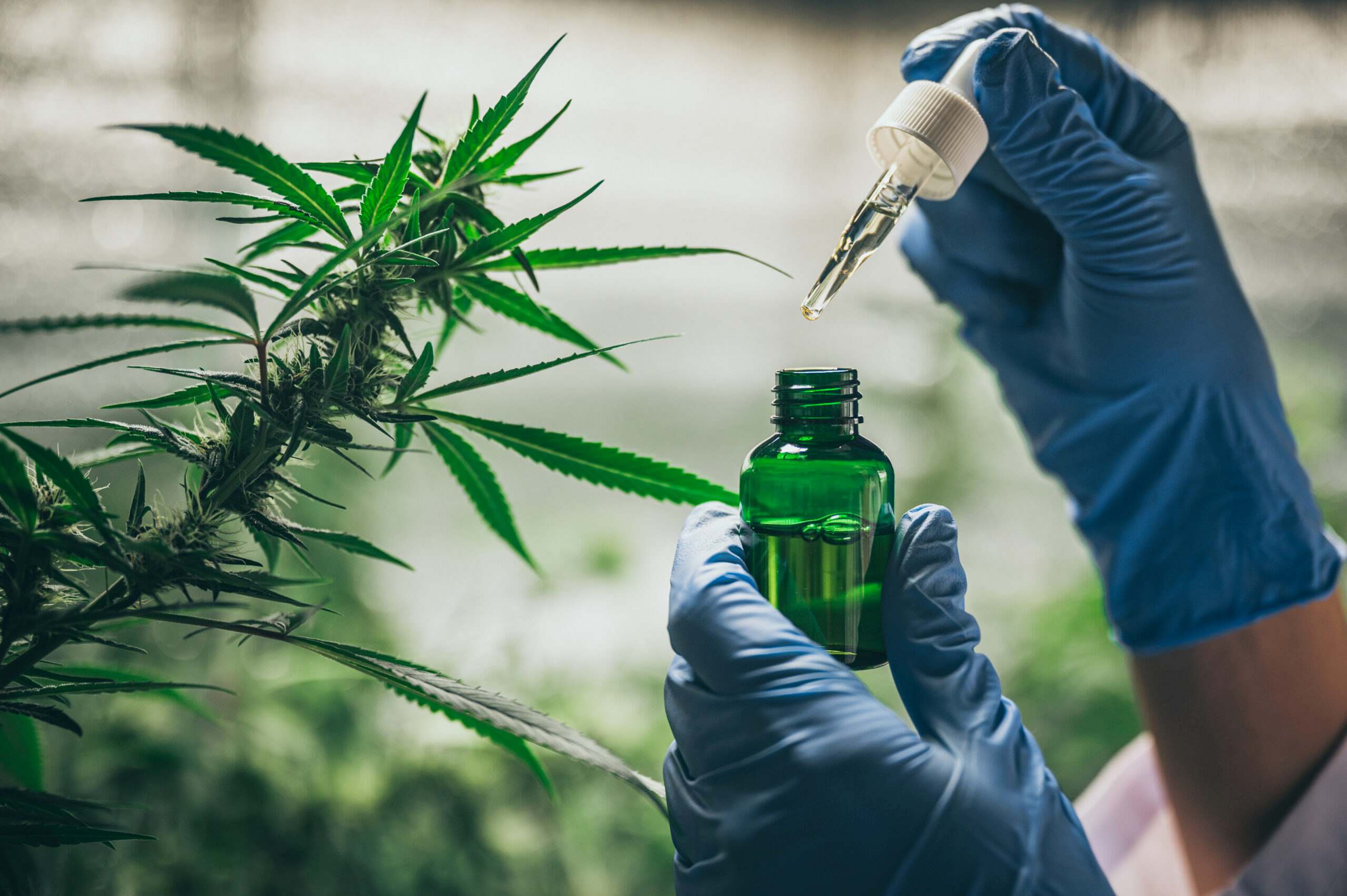

Eco-Friendly Gardening
How To Make Nutrient Solution For Hydroponics
Modified: January 22, 2024
Learn how to create an eco-friendly gardening nutrient solution for hydroponics. Enhance your plant growth and yield with this sustainable method.
(Many of the links in this article redirect to a specific reviewed product. Your purchase of these products through affiliate links helps to generate commission for Chicagolandgardening.com, at no extra cost. Learn more)
Table of Contents
Introduction
Welcome to the world of eco-friendly gardening! As more people become aware of the importance of sustainable practices, eco-friendly gardening has gained popularity. One essential aspect of eco-friendly gardening is using nutrient solutions in hydroponics, a soil-less gardening method that relies on water-based nutrient solutions to nourish plants.
Whether you’re a seasoned gardener looking to explore a more sustainable approach or a beginner eager to grow your own food, understanding how to create and use nutrient solutions is key. This comprehensive guide will walk you through the process of making a nutrient solution for hydroponics.
With hydroponics, plants are grown in a controlled environment where the nutrients required for their growth are directly provided through the water they receive. This method offers several benefits, such as faster growth, higher yields, and the ability to grow plants in limited spaces. Moreover, it reduces water consumption and minimizes the risk of soil-borne diseases and pests.
Creating a balanced nutrient solution is crucial for the success of your hydroponic garden. A well-formulated nutrient solution will contain all the essential macronutrients and micronutrients necessary for plant development. Additionally, it should maintain the appropriate pH levels to ensure efficient nutrient uptake.
Through this article, we will explore the basic components of a nutrient solution, the process of preparing the water, adding macronutrients and micronutrients, adjusting pH levels, and testing the quality of the solution. By the end, you will have the knowledge and confidence to create and maintain a healthy nutrient solution for your hydroponic garden.
Understanding Nutrient Solutions
Before diving into the process of making a nutrient solution for hydroponics, it’s essential to understand what nutrient solutions are and why they are crucial for the growth of your plants.
A nutrient solution is a mixture of essential elements and compounds dissolved in water, providing plants with the necessary nutrients for growth. In a traditional soil-based garden, plants obtain nutrients from the surrounding soil. However, in hydroponics, the nutrients are directly delivered to the plants through the water.
The composition of a nutrient solution is balanced to mimic the natural nutrient availability in soil. It typically consists of macronutrients, which are required in larger quantities, and micronutrients, which are needed in smaller amounts.
Macronutrients include nitrogen (N), phosphorus (P), and potassium (K), also known as N-P-K. These elements play vital roles in plant growth and development. Nitrogen promotes leaf and stem growth, phosphorus enhances root development and flower production, and potassium aids in overall plant health and disease resistance.
Micronutrients are essential trace elements like iron (Fe), manganese (Mn), zinc (Zn), and others. Although required in smaller quantities, these micronutrients are equally important for plants’ physiological processes.
It’s important to note that different plants have varying nutrient requirements. Understanding the specific needs of your plants will help you tailor the nutrient solution accordingly.
Additionally, the pH level of the nutrient solution plays a crucial role in nutrient availability and uptake. pH is a measure of acidity or alkalinity, ranging from 0 to 14. Most plants prefer a slightly acidic pH level between 5.5 and 6.5 for optimal nutrient absorption. Maintaining the correct pH level is essential to prevent nutrient deficiencies or toxicities.
Now that we have a basic understanding of nutrient solutions and their components, let’s move on to the process of preparing and maintaining an effective nutrient solution for your hydroponic garden.
Basic Components of a Nutrient Solution
A well-formulated nutrient solution for hydroponics consists of several essential components that provide plants with the necessary nutrients for optimal growth. Let’s explore the basic components of a nutrient solution:
- Macronutrients: Macronutrients are the primary nutrients that plants require in large quantities. They include nitrogen (N), phosphorus (P), potassium (K), along with secondary macronutrients such as calcium (Ca), magnesium (Mg), and sulfur (S). These nutrients play vital roles in various plant functions, including photosynthesis, protein synthesis, and overall growth and development.
- Micronutrients: Micronutrients are essential trace elements that plants need in smaller quantities. They include iron (Fe), manganese (Mn), zinc (Zn), copper (Cu), molybdenum (Mo), boron (B), and chlorine (Cl). These micronutrients are crucial co-factors in enzymatic reactions and metabolic processes within plants, ensuring healthy growth and proper functioning.
- Water: Water serves as the carrier for the nutrients in a hydroponic system. It should be free from contaminants and have a balanced pH level. Using filtered or purified water is recommended to minimize the risk of introducing harmful substances to the nutrient solution.
- pH Adjusters: pH adjusters are used to maintain the optimal pH level of the nutrient solution. Common pH adjusters include pH up (typically potassium hydroxide) to increase pH and pH down (usually phosphoric acid) to decrease pH. It’s crucial to regularly monitor and adjust the pH of the nutrient solution to ensure proper nutrient uptake.
- Sources of Nutrients: There are various commercial nutrient solutions available in the market that provide a balanced mix of macronutrients and micronutrients. These solutions come in concentrated forms and can be easily mixed with water. Additionally, some gardeners opt for organic nutrient sources or create their own nutrient solutions using individual nutrient salts.
By understanding these basic components, you can start to create a tailored nutrient solution that meets the specific requirements of your plants. In the next sections, we will dive deeper into the process of preparing the water, adding macronutrients and micronutrients, and adjusting the pH level of the nutrient solution.
Preparing the Water
Water is a vital component of a nutrient solution in hydroponics, as it serves as the carrier for delivering nutrients to the plants. The quality of the water used can significantly impact the overall health and success of your hydroponic garden. Here are the key steps to prepare the water for your nutrient solution:
- Source: Start by choosing a suitable water source. Ideally, you want to use clean, filtered water that is free from contaminants. Municipal tap water is often suitable, but it’s essential to check the quality of the water. In some cases, you may need to use a water filter or consider alternative sources, such as collected rainwater or well water.
- pH Adjustment: Measure the pH level of your water using a pH meter or test kit. The pH level should be between 5.5 and 6.5 for most hydroponic plants. If the pH is too high or too low, you can use pH adjusters such as pH up or pH down to bring it to the desired range. Adjust the pH gradually and recheck until it reaches the optimal level.
- Dechlorination: If your water source contains chlorine, it’s important to remove it before using it in your nutrient solution. Chlorine can be harmful to beneficial microorganisms and may affect the nutrient availability for plants. You can dechlorinate the water by allowing it to sit uncovered for 24 to 48 hours, or by using a dechlorinator product available at garden supply stores.
- Temperature: Consider the temperature of the water as well. Most plants prefer a slightly warmer water temperature between 65°F and 80°F (18°C to 27°C). If your water is too cold, you can adjust the temperature using a water heater or by allowing it to sit at room temperature before using it in the nutrient solution.
- Water Quality: It’s important to ensure that the water you use for your nutrient solution is free from impurities or excessive mineral content. Conduct a water quality test if necessary or consider using a reverse osmosis (RO) filter to purify the water. High mineral content in the water can lead to nutrient imbalances and hinder plant growth.
By taking these steps to prepare the water for your nutrient solution, you’re setting the foundation for a healthy and balanced growing environment. The quality and suitability of the water will directly impact nutrient uptake and plant development in your hydroponic system.
Adding Macronutrients
Macronutrients are essential elements that plants require in larger quantities for healthy growth and development. In hydroponics, these macronutrients are added to the nutrient solution to ensure that plants have access to the necessary nutrients. Here is a step-by-step guide on how to add macronutrients to your hydroponic nutrient solution:
- Read the Instructions: If you’re using a commercially available nutrient solution, carefully read and follow the instructions provided by the manufacturer. The instructions will specify the recommended dosage and mixing ratios for adding macronutrients.
- Measure the Nutrients: Using a measuring cup or scale, accurately measure the required amount of macronutrients according to the instructions. It’s important to be precise to avoid nutrient imbalances that could negatively impact plant health.
- Dilution: Start by adding the measured macronutrients to a small amount of water in a separate container. Stir or shake the water to dissolve the nutrients fully. Once the nutrients are completely dissolved, pour the solution into the main reservoir or hydroponic system containing the rest of the water.
- Mixing: Mix the nutrient solution well to ensure the macronutrients are evenly distributed. Use a stirrer or air stone to agitate the solution and promote adequate mixing. This will ensure that all plants receive an equal amount of macronutrients.
- Monitor and Adjust: Regularly monitor the nutrient solution’s electrical conductivity (EC) and adjust the macronutrient levels as needed. EC measures the total concentration of the nutrient solution, indicating how much fertilizer is present. If the EC levels are too high or too low, adjust the macronutrient levels accordingly to maintain the optimal nutrient balance.
Remember that different plants have specific macronutrient requirements. As you gain experience in hydroponic gardening, you can adjust the macronutrient ratios to suit the particular needs of your plants. Regular monitoring and adjustment will help ensure that your plants receive the right balance of macronutrients for optimal growth.
Stay tuned for the next section, where we will explore the process of adding micronutrients to your nutrient solution in hydroponics.
Adding Micronutrients
Micronutrients are essential trace elements that plants require in smaller quantities for proper growth and development. While macronutrients provide the primary building blocks, micronutrients act as catalysts, enabling various biochemical reactions within the plant. Here’s a step-by-step guide on adding micronutrients to your hydroponic nutrient solution:
- Identify Micronutrient Needs: Different plants have varying micronutrient requirements. Research the specific micronutrient needs of your plants to ensure you provide them with the necessary elements. Some common micronutrients include iron (Fe), manganese (Mn), zinc (Zn), copper (Cu), molybdenum (Mo), boron (B), and chlorine (Cl).
- Commercial Micronutrient Solutions: You can find commercially available micronutrient solutions designed specifically for hydroponics. These solutions are generally well-balanced and easy to use. Follow the instructions provided on the packaging to determine the appropriate dosage and mixing ratios for your nutrient solution.
- DIY Micronutrient Mix: Alternatively, you can create your own micronutrient mix by purchasing individual micronutrient salts. Consult a reliable source or an experienced hydroponic gardener to determine the appropriate ratios for your specific plants.
- Prepare the Solution: Begin by measuring out the required amount of micronutrients, either from the commercial solution or your DIY mix. Dissolve the micronutrients in a small amount of water and stir until completely dissolved. Then, add the solution to the main reservoir or nutrient solution container.
- Mix Thoroughly: Stir or mix the nutrient solution well to ensure even distribution of the micronutrients. Proper mixing will help ensure that all the plants receive the necessary trace elements. Consider using a stirrer, air stone, or recirculating pump to facilitate effective mixing.
- Monitor and Adjust: Regularly monitor the nutrient solution’s electrical conductivity (EC) and adjust the micronutrient levels as needed. EC measures the total concentration of the nutrient solution and can provide insights into nutrient balance. If necessary, make slight adjustments to the micronutrient ratios to maintain the optimal nutrient levels for your plants.
Properly adding micronutrients to your hydroponic nutrient solution ensures that your plants have access to all the essential trace elements they require for healthy growth. Keep in mind that micronutrient requirements may vary, so it’s crucial to research the needs of your specific plants. By providing the appropriate micronutrients, you’ll help ensure optimum plant health and productivity.
Next, we will explore the vital step of adjusting the pH levels in your nutrient solution to promote nutrient uptake and plant growth. Stay tuned!
Adjusting pH Levels
The pH level of your nutrient solution plays a crucial role in the availability and uptake of nutrients by your plants. It’s important to monitor and adjust the pH to ensure optimal nutrient absorption and prevent nutrient deficiencies or toxicities. Here’s a step-by-step guide on how to adjust the pH levels in your hydroponic nutrient solution:
- Measure pH: Use a pH meter or pH test kit to measure the current pH level of your nutrient solution. The ideal pH range for most hydroponic plants is between 5.5 and 6.5. If the pH level is outside this range, adjustments are necessary.
- pH Up and pH Down: To increase the pH level, use a pH up solution such as potassium hydroxide or a product specifically designed for pH adjustment. Add small amounts and mix well, then recheck the pH level. To decrease the pH, use a pH down solution such as phosphoric acid, citric acid, or other commercially available pH down products. Again, add small amounts and mix well before retesting.
- Adjust Gradually: Adjust the pH level gradually by making small increments. Avoid making large, sudden changes that can shock the plants. Continuously monitor the pH after each adjustment to ensure you are moving closer to the desired pH range.
- Recheck and Fine-tune: After making adjustments, retest the pH to verify that it is within the desired range. If necessary, make additional minor adjustments to fine-tune the pH level. Remember, pH levels can fluctuate over time, so periodic monitoring and adjustment are necessary.
- Maintain pH Stability: To maintain pH stability, regularly check the pH of your nutrient solution and make any necessary adjustments. Over time, the nutrient solution can become more acidic or alkaline due to nutrient uptake by plants or pH drift. Consistently maintaining the optimal pH range will help your plants absorb nutrients efficiently.
By carefully adjusting the pH levels of your nutrient solution, you create an environment that allows plants to uptake nutrients effectively. Proper pH management is crucial for healthy root development, nutrient absorption, and overall plant growth. Regular monitoring and adjustment of pH levels will help ensure the success of your hydroponic gardening endeavors.
In the next section, we will discuss how to test the quality of your nutrient solution to ensure it provides the necessary nutrients for your plants. Stay tuned!
Testing the Nutrient Solution
Regularly testing the quality of your nutrient solution is essential to ensure that your plants are receiving the necessary nutrients for optimal growth and development. Testing allows you to measure the concentration of nutrients, check the pH levels, and identify any imbalances or deficiencies. Here are some key steps to testing the nutrient solution in your hydroponic system:
- Electrical Conductivity (EC) Measurement: The electrical conductivity of your nutrient solution indicates its total concentration of dissolved salts, including nutrients. Use an EC meter to measure the EC level. Compare the reading to the recommended range for your specific plant type to ensure that the nutrient concentration is appropriate. Adjust the nutrient solution’s strength by diluting it or adding more concentrated nutrients as needed.
- pH Measurement: Use a pH meter or pH test kit to measure the pH level of your nutrient solution. The ideal pH range for most hydroponic plants is between 5.5 and 6.5. If the pH is outside this range, adjust it accordingly using pH up or pH down solutions, as discussed in the previous section. Regularly monitor and maintain the pH within the desired range to promote optimal nutrient uptake.
- Visual Examination: Take a close look at your plants and observe their overall health. Look for any signs of nutrient deficiencies such as yellowing leaves, slow growth, or distorted foliage. These symptoms can indicate nutrient imbalances or deficiencies. Adjust the nutrient solution accordingly based on the specific nutrient requirements of your plants.
- Leaf Tissue Analysis: Conduct a leaf tissue analysis if necessary to determine the nutrient status of your plants more accurately. Leaf tissue analysis involves sending leaf samples to a laboratory for nutrient composition testing. The results will provide insights into any nutrient deficiencies or excesses in your plants. Adjust the nutrient solution composition based on the lab’s recommendations and guidelines.
- Regular Monitoring: Testing and monitoring your nutrient solution should be an ongoing process. Establish a routine to test the nutrient solution on a regular basis, such as weekly or biweekly, to ensure that the nutrient levels and pH remain within the optimal range. This will allow you to make timely adjustments and address any issues promptly.
By regularly testing your nutrient solution, you can maintain a healthy and well-balanced environment for your plants. Adjusting nutrient concentrations and pH levels, based on test results and visual observations, will promote vigorous growth, maximize yields, and prevent nutrient-related problems in your hydroponic garden.
In the final section, we will delve into the importance of maintaining and replenishing your nutrient solution to support the ongoing growth of your plants. Keep reading!
Maintaining and Replenishing the Solution
Maintaining and replenishing your nutrient solution is crucial for the long-term health and productivity of your hydroponic garden. As plants absorb nutrients from the solution, the nutrient levels can become depleted or imbalanced. Here are some important steps to consider when maintaining and replenishing your nutrient solution:
- Regular Monitoring: Continuously monitor the nutrient levels, pH, and overall health of your plants. Maintain a log of measurements and observations to track any patterns or changes over time. Regular monitoring allows you to identify deficiencies or imbalances early on and make the necessary adjustments.
- Refill vs. Complete Solution Change: Depending on the nutrient levels and pH stability of your solution, you can choose to either refill the system with fresh nutrient solution or opt for a complete solution change. Refilling involves adding more nutrients to the existing solution, while a complete change involves replacing the entire solution. Consider the age of the solution, plant nutrient requirements, and the nutrient levels to determine the best approach.
- Replenishing Nutrients: When replenishing your nutrient solution, follow the recommended dosage instructions provided by the manufacturer or adjust accordingly based on your plants’ specific needs. Add the necessary macronutrients and micronutrients to maintain the optimal nutrient balance. Avoid overfeeding or underfeeding your plants, as both can adversely impact their growth.
- Adjusting pH: Just like nutrient replenishment, adjust the pH levels as necessary when refilling or changing the solution. Monitor the pH regularly and make adjustments using pH up or pH down solutions to maintain the desired pH range. pH stability is essential for nutrient availability and proper plant growth.
- Cleaning and Maintaining Equipment: Regularly clean and maintain your hydroponic system, including reservoirs, tubings, and pumps. Regular cleaning prevents the buildup of organic matter, algae, and other contaminants that can impact the nutrient solution’s quality. A clean system helps maintain optimal nutrient delivery to the plants.
- Water Quality: Ensure that the water you use for replenishing the nutrient solution is of high quality. If necessary, use a water filter or purification system to remove contaminants and maintain a balanced pH. Good water quality provides a solid foundation for a healthy nutrient solution.
By diligently maintaining and replenishing your nutrient solution, you provide your plants with a consistent supply of essential nutrients. Regular monitoring, adjustments, and proper equipment maintenance will help ensure that your hydroponic garden thrives and produces abundant harvests.
Now that you have a comprehensive understanding of creating, testing, and maintaining a nutrient solution, you are ready to embark on your eco-friendly gardening journey. Happy growing!
Conclusion
Creating and maintaining a nutrient solution is a fundamental aspect of successful eco-friendly gardening using hydroponics. By understanding the components of a nutrient solution, preparing the water, adding macronutrients and micronutrients, adjusting pH levels, and regularly testing and replenishing the solution, you can provide your plants with the optimal conditions for growth and development.
Remember, eco-friendly gardening is not just about growing plants sustainably, but also about cultivating a deeper connection with nature and contributing to a healthier environment. Hydroponics offers numerous benefits, such as water conservation, efficient space utilization, and reduced reliance on pesticides and herbicides.
As you embark on your journey of eco-friendly gardening, be sure to do thorough research on the specific nutrient requirements of your plants. Tailor your nutrient solution accordingly to provide the right balance of macronutrients and micronutrients.
Regularly monitoring and testing your nutrient solution will help you fine-tune its composition for optimal plant growth. By maintaining appropriate pH levels, you’ll ensure efficient nutrient absorption and prevent nutrient deficiencies or toxicities.
Additionally, don’t forget to maintain and replenish your nutrient solution as needed. Regular cleaning of your hydroponic system and use of high-quality water are crucial for the overall health of your plants.
Eco-friendly gardening through hydroponics is a rewarding and sustainable way to grow healthy plants and enjoy the fruits of your labor. By implementing the strategies and techniques outlined in this guide, you are well-equipped to embark on your own eco-friendly gardening journey and create a thriving hydroponic garden.
So, roll up your sleeves, get your hands dirty, and enjoy the wonders of eco-friendly gardening with nutrient solutions in hydroponics!
